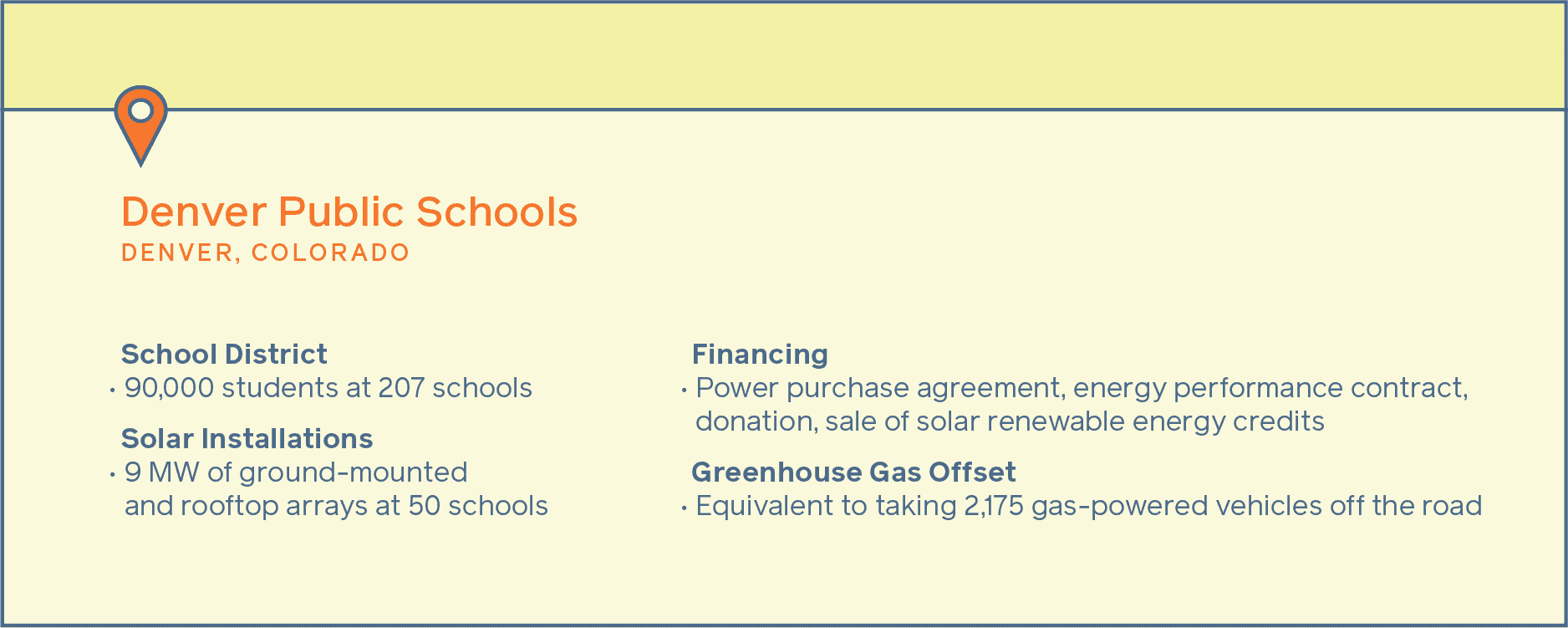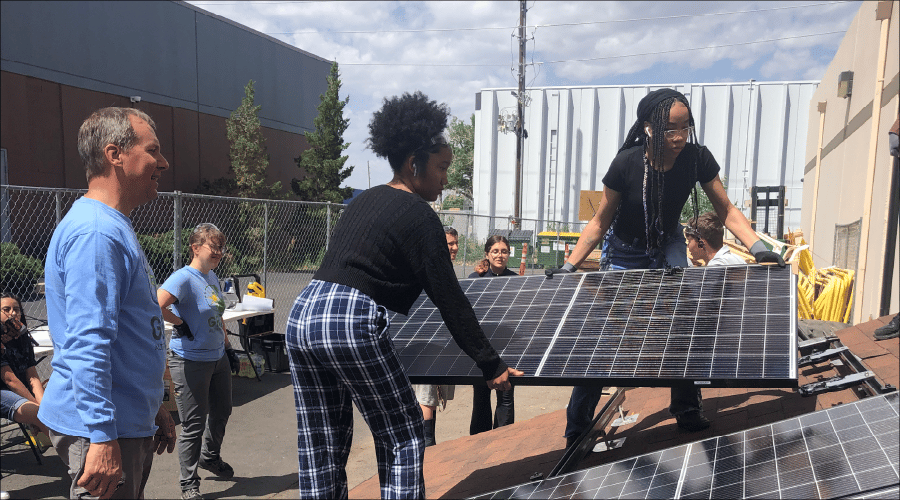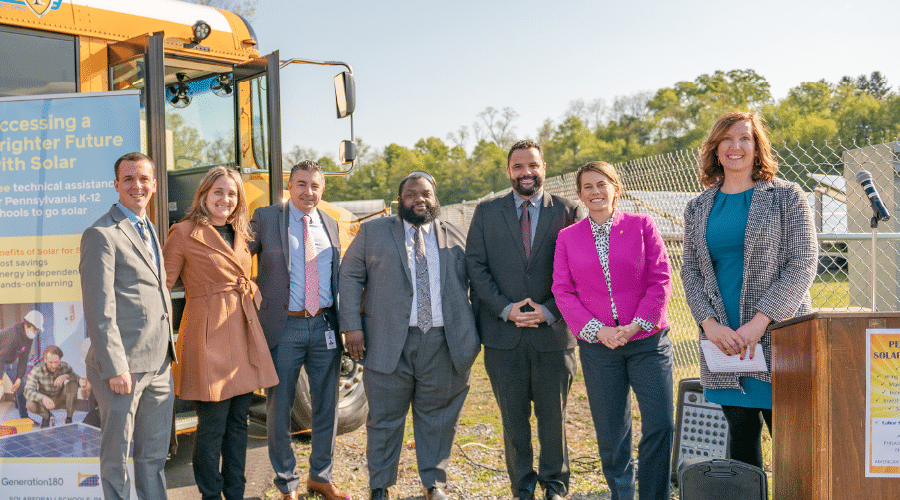This case study was originally published in the 4th edition of Brighter Future: A Study on Solar in U.S. Schools (2022).
“I knew about renewable energy, but I never really understood how it worked or why it was important. The Renewable Energy Academy opened my eyes and introduced me to careers I didn’t know existed,” explains Kimberly, a high school junior in Denver Public Schools (DPS).
Kimberly was one of 12 student participants in the inaugural Renewable Energy Academy, which teaches high school students about careers in renewable energy and gives them an opportunity to gain basic solar installation skills needed to get hired in the solar industry. The four-week summer academy, held in June 2022, was a joint effort between DPS and GRID Alternatives Colorado, a nonprofit solar installer and industry trainer. Funding for the academy came from three-year grants that were awarded to DPS and GRID from Denver’s Climate Action, Sustainability, and Resiliency Department for the promotion of green career pathways.
During the program, students received eight hours of mentoring from engineering and construction professionals, who shared their different career paths and provided guidance on career exploration and setting long-term goals. They went on site tours at Jack’s Solar Garden to learn about using solar fields for agriculture and at the National Renewable Energy Laboratory to participate in renewable energy demonstrations, and attended a workshop focused on electrician apprenticeship opportunities. They also completed a capstone project to design a sustainable city, an activity that enabled students to apply what they learned in the academy and practice soft skills like teamwork and communication that will serve them in the workplace.
A key feature of the Renewable Energy Academy was the opportunity for students to participate in GRID’s solar installation basic training (IBT Lab Lite) during the middle two weeks of the program. This 40-hour high school course taught construction basics, electricity fundamentals, solar system design and components, and 3D modeling, mostly through hands-on applications. Students learned how to use common hand and power tools, completed a solar installation on a mock ground-based roof array, wired a small, off-grid solar system, and engaged in labs to measure solar panel output. They also met with solar industry professionals who discussed their careers and the different career pathways available in solar.
After completing the IBT Lab Lite course, students received a certificate from GRID that demonstrates they have acquired the skills necessary for solar installation. This entry-level, industry-vetted training will give these high school students a head start in the solar industry and prepare them for internships and the next level of training required to enter the workforce. Once students turn 18, they can build on their high school training and participate in GRID’s adult solar training program. GRID also has an agreement with local solar industry partners who will recognize the certificate and consider those students for solar installation jobs at their companies.
All 12 students completed the IBT Lab Lite course, and 11 students completed the entire Renewable Energy Academy. After a successful first year, DPS and GRID look forward to offering the academy again next summer.
As for Kimberly, she plans to use her certificate to get a job in solar installation after high school. She wants to save money for college and is thinking about pursuing a career in solar design and installation or electrical engineering.
“I’m grateful for the opportunity to attend the Renewable Energy Academy,” said Kimberly. “I learned so much and had a lot of fun too!”

















